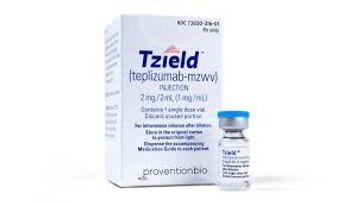
Research uncovers ‘master switches’ that could portend Type 1 diabetes
Key Takeaways
- Researchers identified immune cells in pancreatic lymph nodes that may predict T1D onset earlier than current methods.
- A unique subset of CD4 T cells with increased NFKB1 and BACH2 expression was found in T1D patients and those with early warning signs of the disease
University of Pennsylvania researchers say their findings could potentially lead to the development of a blood test to monitor people at high risk of developing Type 1 diabetes.
New research into pancreatic lymph nodes and spleen cells suggests it may be feasible to predict the onset of Type 1 diabetes (T1D) much earlier than is currently possible.
Investigators from the University of Pennsylvania’s Perelman School of Medicine say they have identified a group of immune cells whose presence heralds the onset of T1D. The investigators said their findings could help facilitate early detection of the disease and possibly create a pathway to stop it.
Co-corresponding author Golnaz Vahedi, Ph.D., and her colleagues explained that despite research into the genetic underpinnings of T1D and therapeutic advances that can delay disease onset, major questions about T1D remain. In particular, they said there is a lack of reliable biomarkers at the early stages of the disease, making it difficult to identify patients who would benefit from early intervention.
“The current standard for early detection of autoimmunity relies on identifying and quantifying the number, type, and titer of specific islet autoantibodies present in the serum of at-risk individuals,” they wrote.” However, islet autoantibodies alone are not robust early predictors of individual progression to T1D onset.”
Vahedi, a professor of genetics at the Perelman School of Medicine, hypothesized with colleagues that if they could perform molecular profiling on immune cells in pancreas-related tissues, they might be able to find immune subsets that receive specific cytokine signals as T1D progresses. Identifying those signals could enable them to develop biomarker tests. They noted that the National Institute of Diabetes and Digestive and Kidney Diseases supports a database that collects pancreas and immune-related tissues from organ donors. That database, they said, helped make their research feasible.
The investigators obtained pancreatic lymph nodes and spleens from 43 organ donors. The donors were a mix of people with T1D, people who tested positive for islet antibodies (an early warning sign of the disease), and healthy controls. They analyzed approximately 1 million cells to measure gene expression and chromatin accessibility. The analysis identified a unique subset of CD4 T cells, which they said act as “helper” immune cells in the pancreatic lymph nodes of people with T1D. Those cells increase expression of the proteins NFKB1 and BACH2, which the investigators said act like “master switches” to accelerate the immune system’s attack on insulin-making cells. Notably, the pattern was seen even in the patients with only “warning signs” — but no full diagnosis — of T1D.
“The study showed the same cell pattern occurred in pre-type 1-diabetic people who don’t yet show the symptoms,” Vahedi said in a news release. “This suggests that the immune misfire begins early, potentially while plenty of insulin-producing beta cells are still healthy.”
Vahedi said she and her team also identified molecular changes in certain white blood cells and B cells in the spleen samples. The authors said such changes could be identified using simple blood samples, suggesting that a blood test could one day be developed to monitor high-risk individuals for T1D development.
The research,
“Our goal is to teach AI the molecular language of T1D—training it on pathogenic cells in pancreatic lymph nodes so it can detect their faint traces in blood, even when they’re like a needle in a haystack,” Vahedi said.
Newsletter
Get the latest industry news, event updates, and more from Managed healthcare Executive.




















































